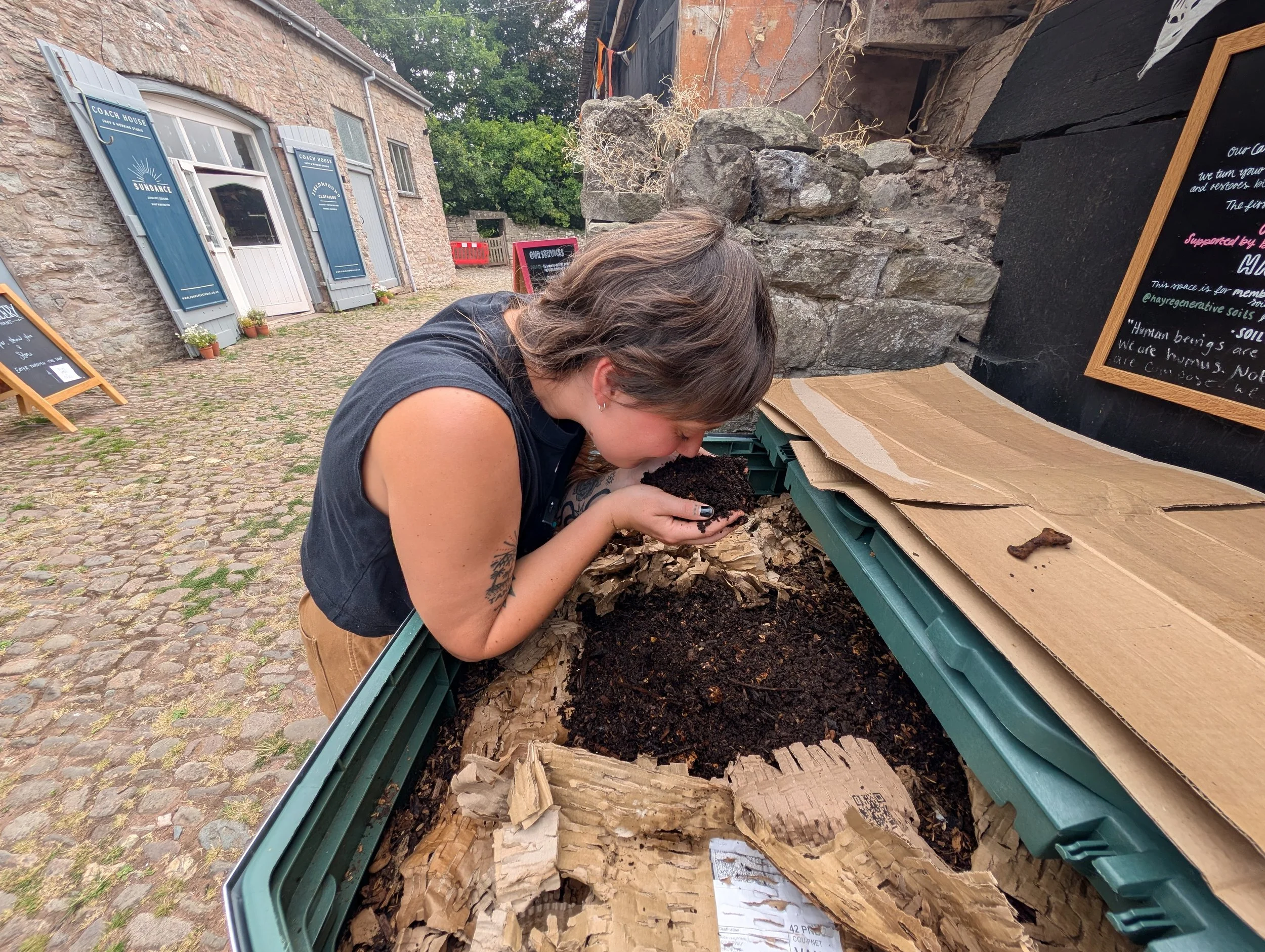5 Surprising Truths About Waste, Community, and a Cauldron of Compost.
Most of us scrape veg peelings and stale crusts into a bin without a second thought. Out of sight, out of mind. But in Hay-on-Wye, a small CIC called Hay Regenerative Soil is proving those scraps can be something else entirely: a catalyst for belonging, a bridge to heritage, and a starter culture for local regeneration.
To build a movement, start with a story (and ancient folklore)
Co-director Daisy didn’t begin with charts and tonnages; she led with myth. Drawing on archaeology and anthropology, she reframed composting through Welsh folklore—casting the tumbler as Ceridwen’s cauldron and the brew inside as a portal from endings back to beginnings. Suddenly, “taking out the scraps” became a ritual worth talking about.
Why it works: Story turns a chore into culture. It helps people see themselves in the work—and keeps them coming back.
“Soil is storytelling and heritage… when you want people excited and together, that’s how you make change.”
Small and slow beats big and fast
The project’s first site was tucked away at a wildlife campsite—remote, awkward, shared with horses and donkeys. Imperfect? Definitely. Invaluable? Absolutely. That hidden corner functioned as a learning lab for hot composting, microbes, and feedback loops before stepping into a central location at Hay Castle.
Sustainable growth is paced by learning, not hype. Build fluency and systems before you scale.
The £6 question isn’t about disposal—it’s about belonging
Why pay £6/month for a drop-off service when council collection is “free”? Because members aren’t buying a bin—they’re backing a mission. Fees keep a community-run, fossil-fuel-free system alive: buckets, tools, testing, and the people coordinating it.
What people are really purchasing: identity, impact, and a circular local story they’re proud to be part of—“two coffees” that keep the cauldron turning.
A hyper-local economy can run on pedals (and pink)
When public cardboard bins vanished, local businesses were stuck with costs. Enter a bike-powered, worm-pink cardboard perforator (designed by Javier at Singular Mars). Volunteers cycle cardboard in, pedal it into perforated goodness, and cycle value back out as carbon for compost and bio-packaging for shops.
Result: An elegant micro-loop—no lorries, no landfill. Just legs, laughter, and low-tech ingenuity.
Waste isn’t waste until you treat it that way
Pink buckets turn “rubbish” into material. Members feel the weight of their choices and watch it return as living soil. One baker’s leftovers become compost that nourishes the farm that grows her grain—a neat circle that tastes like toast.
Shift the lens: from disposal to regeneration. From end-of-life to start-of-soil.
How the magic actually works (quick tour)
Membership options: a £6/month weekly drop-off (40L pink bucket) or a monthly collection with Bokashi to pre-ferment scraps and keep smells down. Collections are bike-and-trailer, fossil-fuel-free.
The kit: a Ridan composter for hot, aerobic processing; maturation bays layered with pedal-perforated cardboard; worm inoculation once the heat drops; and microbiology testing before distribution.
The loop: local carbon inputs (wood shavings, spent mushroom blocks, even guinea pig bedding), local food waste, local compost, local farms and gardens. Nothing travels far, except good stories.
Lessons for any town (including yours)
Lead with place. Folklore, landmarks, and local humor beat generic campaigns.
Prototype in public. Start scrappy, learn out loud, tighten the loop.
Price for participation. A small fee can fund continuity—and community.
Design for legs, not lorries. Human-scale tools change what’s possible.
Name the ritual. A bucket can be a portal when you invite people to see it that way.
What’s hiding in your bin?
Hay Regenerative Soil blends art and systems thinking to make change tangible. Their compost isn’t just crumbly and alive; it’s legible—you can see how it happens, who makes it, and where it goes.
Next time you clear a plate, pause. What story could those scraps tell if you let them?
Want to try a version of this where you live?
Start with a story, a few buckets, and a place to learn. The rest—pedals, pink machines, and proud members—has a way of following.



